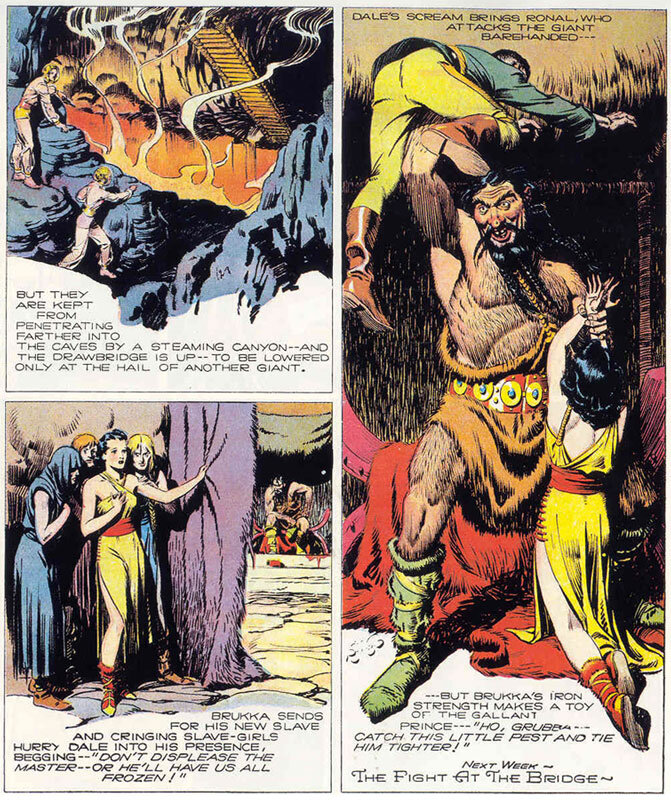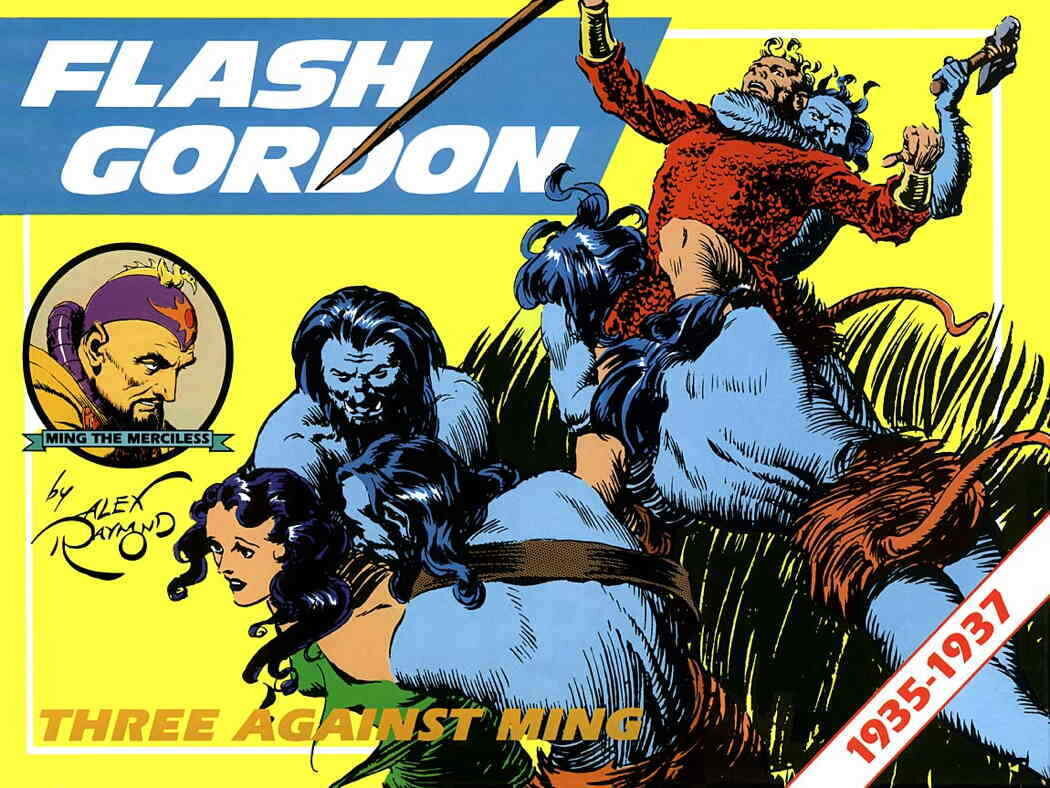Props to Alex Raymond
“Comic art is an art form in itself. It reflects the life and times more accurately and actually is more artistic than magazine illustration - since it is entirely creative. An illustrator works with camera and models; a comic artist begins with a white sheet of paper and dreams up his own business - he is playwright, director, editor and artist at once." — Alex Raymond
Two days back, Alex Raymond would’ve celebrated his one hundred and tenth birthday. While I knew that fact, Real World Stuff has been coming at me fast n’ hard ever since I returned from my stay in the Pretannic Archipelago. At the time, I decided to pass on a post honoring Alex. Then, today, I did a little research on Mr. Raymond…
As I found out, Alex Raymond absolutely merits a (belated) birthday post. A man admired by Jack Kirby, Frank Frazetta, Gray Morrow, Joe Kubert, Gil Kane, Neal Adams and John Buscema—on top of being one of the most successful comics creators of all time—warrants a post here at the DMR Blog. The fact that he was a pretty cool guy outside of his work in the comics field just makes it more imperative to give him the proper respects.
Alex Raymond, along with Hal “Prince Valiant” Foster, completely revolutionized comics in the USA and beyond during the Interwar Period. Before Raymond—and Foster—comic art tended to be crude and/or stylized to the point of caricature. Raymond brought commercial art training to the newspaper comics strips—there being no real “comic books” published at the time. He had worked as a stockbroker up until the Wall Street Crash of 1929 forced him to look for alternate means of employment. His artistic skills quickly led him to King Features, which was essentially the newspaper comics arm of the William Randolph Hearst media empire.* By 1934, Raymond was set to debut not one, but three, newspaper comic strips for King Features. The one that is still remembered to this day is Flash Gordon.
Flash Gordon—which debuted on January 7, 1934—was created in response to the success of a rival strip from the John F. Dille Company: Buck Rogers. Apparently, Alex saw the numerous weaknesses in the Buck Rogers strip, three of which being crude art, too many spaceships and not enough swordplay. In short order, Flash Gordon was kicking the ass of Buck Rogers, circulation-wise. By the late 1930s, Flash Gordon was being read by fifty million people, many of whom were overseas fans. Even World War Two couldn’t stop the Flash Gordon juggernaut. When WWII saw the cancellation of the strip in many European newspapers, local creators stepped up to chronicle their own adventures of the interplanetary swashbuckler.
The two other newspaper strips that Raymond helped create in 1934 should also be mentioned. Jungle Jim—set in southeast Asia—was intended as competition to United Features’ wildly successful Tarzan strip. While it never reached the commercial heights of Tarzan, Jungle Jim was quite succesful and continued on for decades. Secret Agent X-9 was a crimebuster/secret agent strip scripted by none other than Dashiell “The Maltese Falcon” Hammett. Hammett would soon be replaced by Leslie “The Saint” Charteris, but Raymond left to concentrate on Flash Gordon and Jungle Jim. Secret Agent X-9 continued as a successful newspaper feature for the next fifty years.
Classic Alex Raymond art from the Flash Gordon newspaper strip.
The USA entered World War Two in late 1941. Four of Alex’s five brothers enlisted. By 1944, he couldn’t take it any longer. As he put it, "I just had to get into this fight... I've always been the kind of guy who gets a lump in his throat when a band plays ‘The Star Spangled Banner'". Raymond enlisted in the Marines at the age of thirty-four—he obviously wasn’t looking for an easy ride—and saw intense combat in the Pacific during June of 1945.
When Alex was demobilized, he discovered that King Features didn’t want to give him his old job back at Flash Gordon. Instead, in consolation, they offered to let him come up with yet another strip—”Yeah, Alex, sorry about you serving with the Marines and losing your job. How about you give us yet another goldmine to exploit?”
Raymond did just that, creating the urbane detective, Rip Kirby. The strip was highly influential and would continue on, long after its creator’s death, until 1999.
Alex Raymond’s days were numbered, despite all the postwar success and accolades that he accrued. On September 6th, 1956, he crashed a friend’s Corvette into a tree during a rainstorm, dying at the age of forty-six. However, his influence still lives on to this very day and beyond.
*Hearst’s empire at that time also included the Atlantic Weekly, where one A. Merritt was the Editor-in-Chief.



